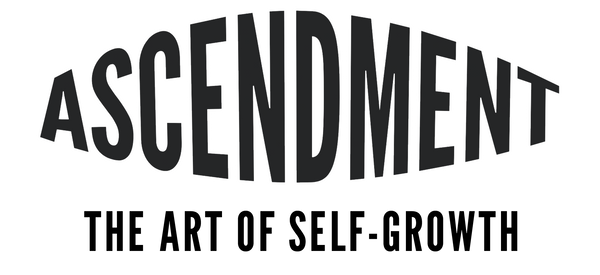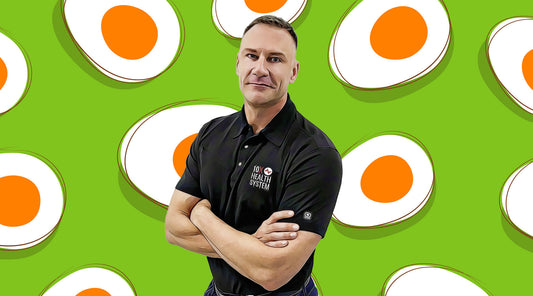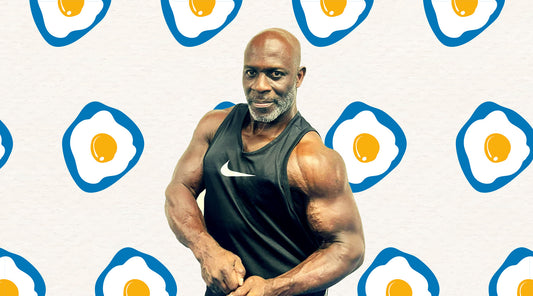So, you want to “tone up”? People tell you to use lighter weights and increase the number of reps. This is complete gobbledygook. Put down the 1lbs dumbbells and stop doing 5 sets of 50 bicep curls.
In this article we’ll teach you two proven ways to improve the aesthetics of your physique. The advice around “toning up” is usually completely wrong and it advocates a style of low intensity training that will provide little results.
Stop Doing Light Weights & High Reps
There is a long-running myth that using lighter weights and increasing the amount of reps will help you “tone up”. Truth is, you’ll build very little muscle this way. You may burn more calories than usual due to the increased number of reps, but when you train intensely with heavier weights you burn even more calories as it instigates our metabolic mechanism.
Lifting heavier weights with intensity will firstly build muscle and secondly burn body fat. The intensity boosts your metabolism and gives your body more natural fat-burning capacity even after completing the workout. This is how you change the aesthetics of your physique for the better. We have a full article on the importance of training with intensity here.

Do this Instead of Toning Up
We can define “toning up” as improving the aesthetics of our physique by building muscle and burning body fat. The lower your body fat percentage becomes the more muscle will be revealed. If you try to do this through cardio or through the high volume - low weight myth the truth is there’ll be little muscle to reveal unless you are a seasoned gym-goer.
Therefore, we must build muscle first. There are two options for this:
1. A Clean Bulk
This is where we pack on muscle before doing a “cut” phase. This requires us to be in a calorie surplus which means eating more calories in a day than we expend. Aim for a surplus of 300-500 calories. So, if you’re expending roughly 2,000 calories a day, make sure you eat at least 2,300 calories.
Ensure that you are eating foods with plenty of protein. A rule of thumb is 1g of protein per pound of bodyweight. Finally, train with intensity. Gradually increase the amount of reps you perform on each exercise. If you do 6 reps on shoulder press, aim for 7 on your next shoulder session. Do this until you get to 10 reps, then increase the weight. This is progressive overload and signifies that your muscles are getting stronger. Never get comfortable, keep thriving for improvement.
A “clean bulk” means we are eating as little chocolate, candy, and processed foods as possible. Stick to wholefoods, fruit, and vegetables. The opposite of this is a “dirty bulk” where you eat literally anything, and you end up in massive calorie surplus. This results in more body fat being stored which will take longer to get rid of further down the line.

You want to spend at least 8 weeks on a bulk to see significant amounts of muscle being built. If you’re happy with your body fat levels, you can keep bulking for a lot longer. If you’re really slim to start with a bulk of 6-8 months isn’t out of the question.
Once you’ve noticeably gained muscle and you’re starting to notice your body fat percentage is getting a little high, it’s time for a cut phase. Cutting means eating in a calorie deficit. This means eating less calories than you expend in a day. If you expend roughly 2,000 calories per day (this is known as your maintenance level), eat 1,700 calories a day. This would be a deficit of 300 calories and will allow you to lose body fat sustainably over a long period of time. If you had a bigger deficit there would be a bigger risk of losing muscle as well as your mood being low.
During a cut continue training in the same way. Training with intensity and focusing on progressive overload. Adding cardio to your routines will also speed up the process of losing body fat.
2. Body Recomposition
The alternative to bulking and then cutting is called body recomposition. With body recomp you can build muscle and lose body fat simultaneously. This works best when you are in a slight calorie deficit of 100-200 calories. The key is to prioritize protein so you can maintain and build further muscle whilst in this slight calorie deficit. This is a steadier process than bulking and cutting but your lean muscle mass will gradually increase while your body fat percentage decreases. This can be performed all year round. Through consistency and persistence you will continue to see results. If you get to a stage where your body fat is low and you’ve gained muscle you can choose to maintain your current condition through eating at maintenance levels or you can choose to do a clean bulk to increase your muscle mass even more.
How to Train
If you’re just starting out it’s important to get to grips with different exercises and to master the techniques. Once you feel comfortable, concentrate on progressive overload. 6-10 reps per set is perfect for building muscle. Perform progressive overload by constantly increasing the amount of reps then increasing the weight. Once you can do 10 reps of an exercise increase the weight slightly next time you do that exercise. Keep doing this and you will see gains.
The key to building muscle is intensity. Once you are comfortable in the gym prioritize putting maximum effort into your lifts. This means pushing your limits in terms of the weight you are lifting. Go to failure. This means using a weight where you can do 6-10 reps and then can’t possibly do another rep on your own. Having a gym partner can help you train even more intensely. Once you reach failure on the positive movement of the exercise you always have enough strength for the negative, which is the lowering of the weight. Your gym partner can then spot you to help you perform another one or two forced reps.

Should I Bulk/Cut or do Body Recomp?
Really, this is dependent on your current body type. If you are skinny you need to build muscle so you would benefit more from quite a long bulking period. If you are overweight with a high percentage of body fat - body recomp is the way to go as you’ll lose body fat while building muscle. If you’ve been going to the gym for a while, you could use either method. It would depend on your current muscle mass to body fat ratio.
Summary
If you’re new to the gym learn the techniques and get comfortable performing them. Once you feel confident - use heavier weights. Perform rep ranges of 6-10 with a weight that pushes you to failure meaning you can’t do another rep without help from a gym partner. Focus on progressive overload. If you do 6 reps on shoulder press, aim for 7 during your next session. Once you can do 10 reps increase the weight slightly and do the same again. This is progressive overload. Training in this manner ensures you are training with intensity which is a requisite for building muscle.
Depending on your current physique choose to bulk and then cut, or do a body recomposition. If you are skinny a bulking phase is necessary. If you are overweight with a high body fat percentage body recomp is advisable. Whichever type of program you decide to proceed with train with intensity and perform progressive overload.
Making progress with your physique takes discipline & a strong mindset. Learn how to bulletproof your mindset with our free guide.
If you want to level up your life get our Transform Your Life Guide (coming soon) to learn how to improve every area of your life.




